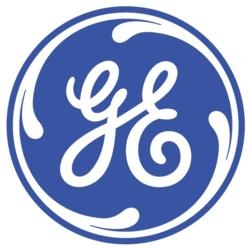Tue, Apr 21, 2015
FAA Certified The Part In February
The GE90 engine, which was the first jet engine to utilize composite fiber polymeric material on the front fan blades 20 years ago, achieved another milestone ... becoming the first GE engine to incorporate an additive manufactured component for the housing on the T25 sensor.

The FAA granted certification of the T25 engine sensor for the GE90-94B engine in February. The upgraded T25 sensor, located in the inlet to the high pressure compressor, is being retrofitted into more than 400 GE90-94B engines in service. The T25 sensor provides pressure and temperature measurements for the engine’s control system.
“Additive manufacturing has allowed GE engineers to quickly change the geometry through rapid prototyping and producing production parts, saving months of traditional cycle time for the T25 sensor housing without impacting the sensor’s capabilities,” said Bill Millhaem, general manager of the GE90/GE9X engine program at GE Aviation.
The T25 sensor housing is just the start of additive manufacturing at GE Aviation. Several next-generation engines currently in development will incorporate the advance manufacturing technique. On the LEAP* engine for narrowbody aircraft and the GE9X for the Boeing 777X aircraft, GE Aviation will produce part of the fuel nozzles with additive manufacturing.
Additive manufacturing represents a significant technology breakthrough for GE and the aviation industry. Unlike traditional manufacturing methods that mill or cut away from a metal slab to produce a part, additive manufacturing (also called 3D printing) "grows" parts directly from a CAD file using layers of fine metal powder and an electron beam or laser. The result is complex, dense parts without the waste, manufactured in a fraction of the time it would take using other methods.
Additive manufacturing has many advantages. It allows GE to design parts with unique geometries that were impossible to create using traditional machining methods. These additive manufactured components can reduce part count by replacing assemblies with single parts and can be lighter than previous designs, saving weight and increasing an engine’s fuel efficiency.
More News
Pilot Applied Full Aft Stick And Nose-Up Trim, But The Airplane Remained On The Runway Analysis: The pilot reported that a preflight inspection and flight control checks revealed n>[...]
A Few Questions AND Answers To Help You Get MORE Out of ANN! 1) I forgot my password. How do I find it? 1) Easy... click here and give us your e-mail address--we'll send it to you >[...]
From 2022 (YouTube Edition): Before They’re All Gone... Humankind has been messing about in airplanes for almost 120-years. In that time, thousands of aircraft representing i>[...]
Advanced Air Mobility (AAM) A transportation system that transports people and property by air between two points in the NAS using aircraft with advanced technologies, including el>[...]
Aero Linx: MQ-1B Predator The MQ-1B Predator is an armed, multi-mission, medium-altitude, long-endurance remotely piloted aircraft that is employed primarily as an intelligence-col>[...]
 NTSB Final Report: Douglas A-4K
NTSB Final Report: Douglas A-4K ANN FAQ: Q&A 101
ANN FAQ: Q&A 101 Classic Aero-TV: PBY Catalina--From Wartime to Double Sunrise to the Long Sunset
Classic Aero-TV: PBY Catalina--From Wartime to Double Sunrise to the Long Sunset ANN's Daily Aero-Term (07.01.25): Advanced Air Mobility (AAM)
ANN's Daily Aero-Term (07.01.25): Advanced Air Mobility (AAM) ANN's Daily Aero-Linx (07.01.25)
ANN's Daily Aero-Linx (07.01.25)



